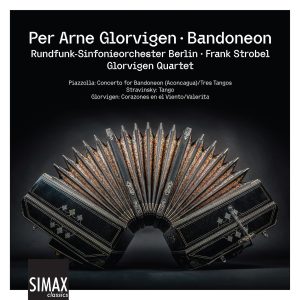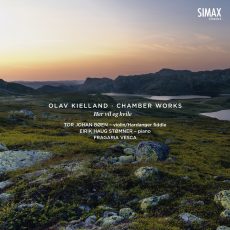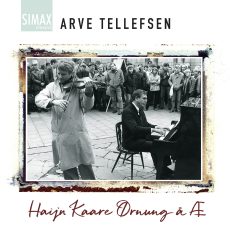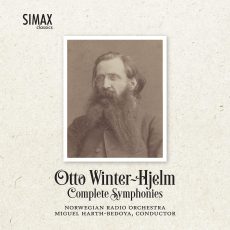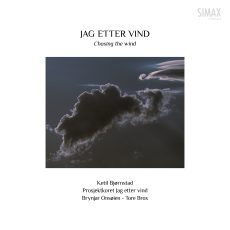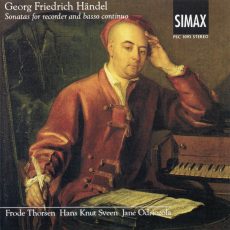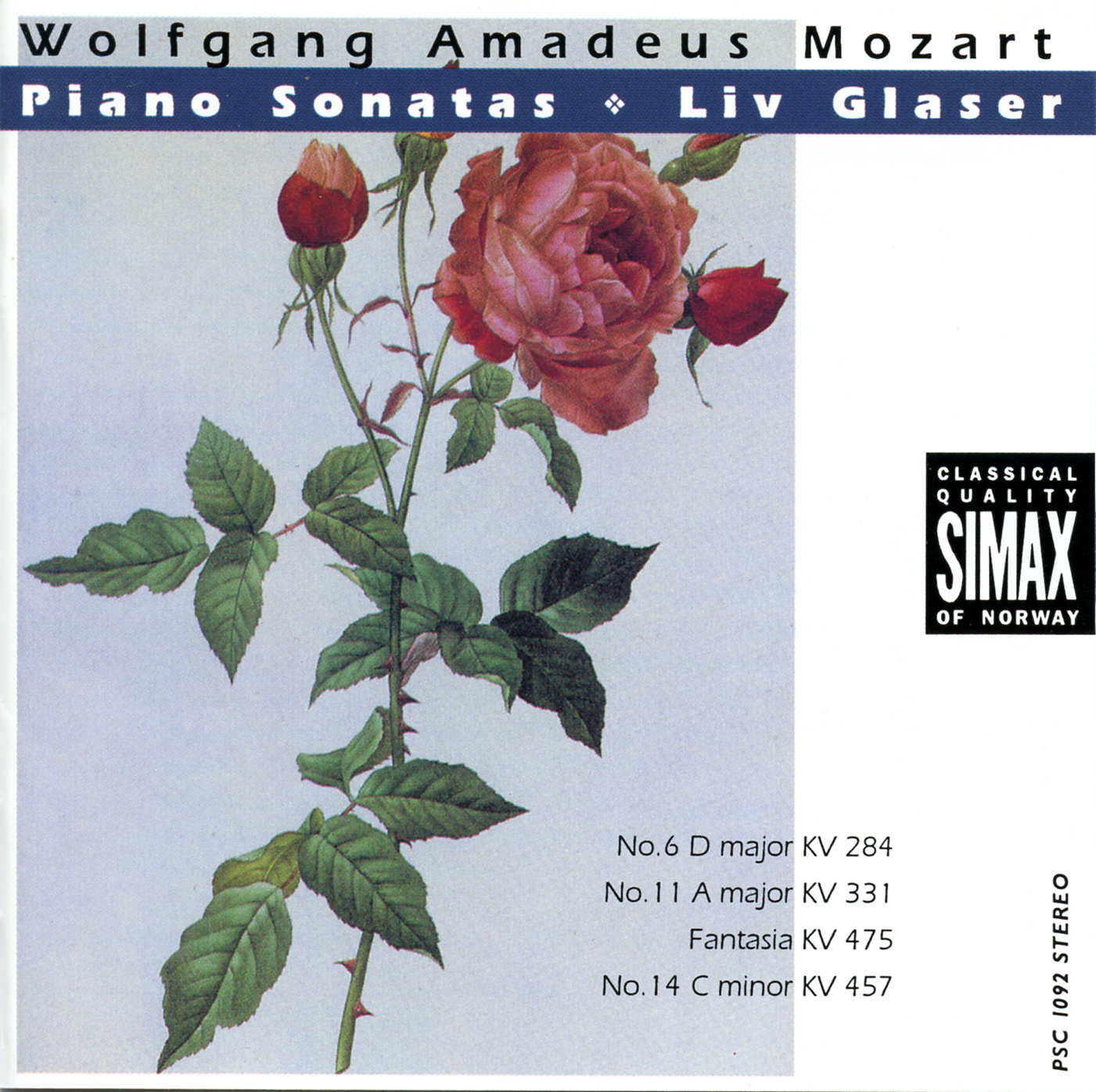Piazzolla’s goal in life was to establish his tango music as a separate art form, independent of traditional tango dance. So it was a logical step to give the bandoneon the most prominent place imaginable in art music: as the soloist with a symphony orchestra. Which resulted, among other things, in the works “Concierto Para Bandoneon Y Orquesta (Aconcagua)” and “Tres tangos”, which we hear Per Arne Glorvigen play together with the Radiosinfonieorchester Berlin on this record.
“The recording with the Berlin Radio Symphony Orchestra was a live concert radio recording that was organized when our concert marking Piazzolla’s 100th birthday at the Berlin Philharmonie was cancelled due to Covid restrictions. At around the same time I was fortunate enough to receive a commission from Leif Ove Andsnes to write a tribute to Piazzolla that was given its world premiere at the Rosendal Chamber Music Festival in August 2021. I will be eternally grateful to that festival for this commission. In the work “Corazones en el Viento” (“Hearts in the Wind”) I try to carry Piazzolla’s tradition forward without necessarily making use of his musical language. What is most important to me is to be true to Astor’s basic idea: creating something new and unexpected with the bandoneon, something that has roots in the tango tradition but forges a new path.” – Per Arne Glorvigen
“I only met Piazzolla once, at a festival in Tulle, France, in 1988 where we were both on the bill. He seemed exhausted, and I was young and so full of respect that I barely managed to get a word out although there was so much I wanted to ask my great hero about. The same thing had happened to Piazzolla himself 30 years earlier, when he had met HIS great hero, Igor Stravinsky, at a dinner for Argentinian diplomats in New York. Piazzolla had listened to Stravinsky repeatedly since his teenage years. Along with Bach and Bartok, Stravinsky was probably the art music composer who had inspired him most. Stravinsky had probably heard the first great Argentinian tango musicians, such as Eduardo Arolas, in Paris in the years around World War I. And just as he was inspired by waltzes, ragtime and other fashionable dances, it was natural for Stravinsky to write a tango.” – Glorvigen.
Per Arne Glorvigen is among the foremost of today’s bandoneon players. His contact with this instrument began as late as at the age of 25 when he after having finished the Academy of Music in Oslo, moved to Paris and met the Argentinian bandoneon maestro Juan José Mosalini. After two years of studying with Mosalini and several stays in Buenos Aires, Glorvigen began his career as a professional bandoneonist and meetings with tango legends Piazzolla, Pugliese, Salgán and a close friendship with poet Horacio Ferrer have proven critical in this process.
In addition to playing tango, baroque, kletzmer, pop and contemporary music, Glorvigen has composed several works for bandoneon and orchestra. In 2006 he began studying composition with Eric Tanguy in Paris, and later orchestration with Guillaume Connesson – this led to his first release with his own compositions; Bueno Aires – Paris – Chicago (Aurora 2019) with works for cello (Andreas Brantelid), bandoneon and orchestra (the Norwegian Chamber Orchestra). Followed up by a release with compositions for the France string quartet Quatuor Diotima, and his own ensemble GLO2020 (LAWO).
Among Glorvigens musical partners we find artists as Giora Feidman (clarinet), Göran Söllscher (classical guitar), the ensemble Tango for 3, the Leipziger Streichquartett, the Alban Berg string quartet, Deutsche Kammerphilharmonie of Bremen, the BBC Symphony Orchestra, Orchestra Guiseppe Verdi Milano, Philharmonic, the Russian National Orchestra, the Soloists of the Orchestre de Paris, and the most important Scandinavian symphony orchestras. Nevertheless, his most important collaboration has been violonist Gidon Kremer with whom he has recorded 4 CDs and played nearly one hundred concerts worldwide. His main partners today are the members of the Glorvigen Trio, violinist Daniela Braun and the double bassist Arnulf Ballhorn.










